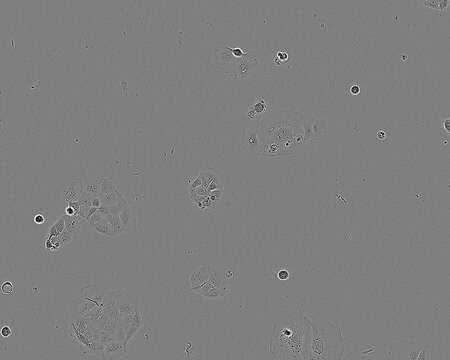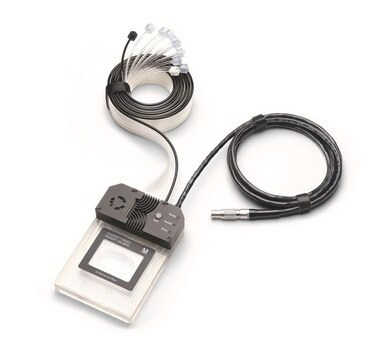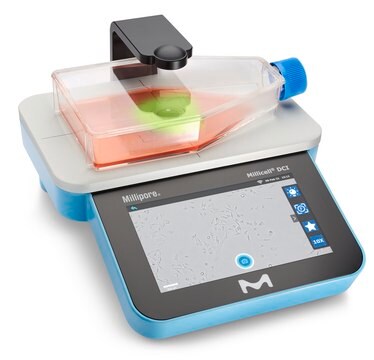M04S-03-5PK
CellASIC ONIX switching plate mammalian cells (4 chamber)
The M04 switching plates enable continuous perfusion culture for live cell analysis. Laminar flow provides rapid & uniform solution exchange for maximum cell health. The glass coverslide bottom surface ensures the highest resolution optical viewing.
Synonym(s):
CellASIC ONIX Plate, Mammalian Cell Plate, ONIX Switching Plate
About This Item
Recommended Products
material
PMMA
glass
polycarbonate
polydimethylsiloxane (PDMS)
manufacturer/tradename
CellASIC® ONIX
W × L × H
85.48 mm × 127.76 mm × 14.35 mm
compatibility
for use with cells sized up to 50.0 μm
shipped in
ambient
General description
Application
- in live-cell imaging to study the contribution of phi-particle in the autoinhibition of dynein and the activation of dynein by dynactin
- in live-cell imaging of fcSAgA binding and immunoglobulin M surface clustering by fluorescence microscopy
- in multiple epidermal growth factor (EGF)pulse experiments
- time-lapse analysis of adherent cells
- long-term continuous perfusion experiments (3 days typical)
- solution exchange experiments (induction, inhibition, drug dosing, etc.)
- automated immunostaining and on-demand fixation of live cells within the culture chamber
- comparison of up to four different cell types or exposure conditions (media components) in parallel, temperature, and gas atmospheric control (temperature shift, anoxic conditions, etc.)
Features and Benefits
- Compatible with CellASIC® ONIX2 Microfluidic system and ONIX2 Manifolds
- Enables perfusion-based, long-term, live-cell analysis with solution switching
- The plate offers a controlled and dynamic microenvironment for 2D and 3D cell cultures
Legal Information
Storage Class Code
12 - Non Combustible Liquids
WGK
nwg
Flash Point(F)
Not applicable
Flash Point(C)
Not applicable
Certificates of Analysis (COA)
Search for Certificates of Analysis (COA) by entering the products Lot/Batch Number. Lot and Batch Numbers can be found on a product’s label following the words ‘Lot’ or ‘Batch’.
Already Own This Product?
Find documentation for the products that you have recently purchased in the Document Library.
Articles
This page describes novel microfluidic approaches to trap two different cell types in precise locations in order to image and study their interactions over time.
This page describes a novel, optimized microfluidic platform for long-term culture of primary neurons to monitor dynamic cellular processes in real time.
Application note on how the CellASIC® ONIX2 microfluidic system can be used to analyze caspase-3 mediated apoptosis/cell death and cellular hypoxia in live immune and cancer cell lines.
This page shows the long-term culture and in-plate staining protocols using the CellASIC ONIX Microfluidic platform.
Related Content
This article describes CellASIC® ONIX live cell analysis platform for neural stem cell microenvironment control
Convert your microscope to a live cell imaging system – the CellASIC® ONIX2 system allows precise manipulation of the cell culture environment for dynamic live cell imaging and analysis using mammalian, yeast, and bacterial cells.
Convert your microscope to a live cell imaging system – the CellASIC® ONIX2 system allows precise manipulation of the cell culture environment for dynamic live cell imaging and analysis using mammalian, yeast, and bacterial cells.
Convert your microscope to a live cell imaging system – the CellASIC® ONIX2 system allows precise manipulation of the cell culture environment for dynamic live cell imaging and analysis using mammalian, yeast, and bacterial cells.
Our team of scientists has experience in all areas of research including Life Science, Material Science, Chemical Synthesis, Chromatography, Analytical and many others.
Contact Technical Service




